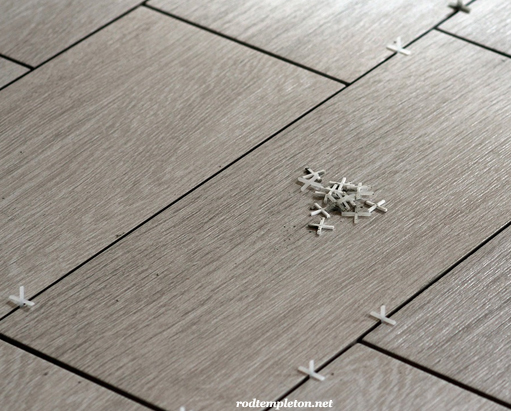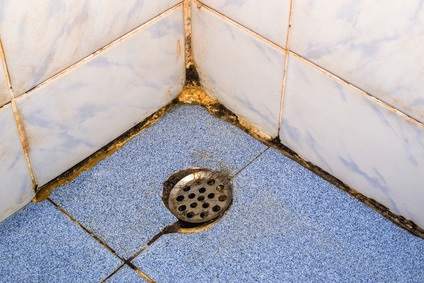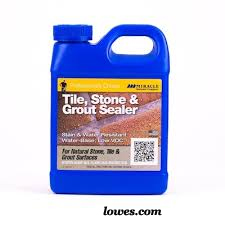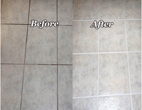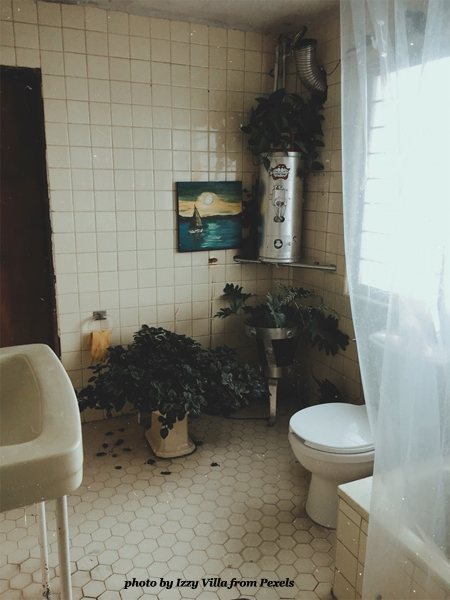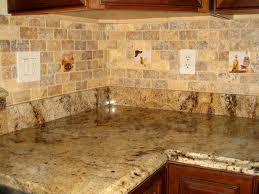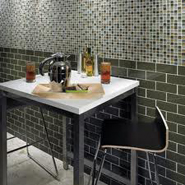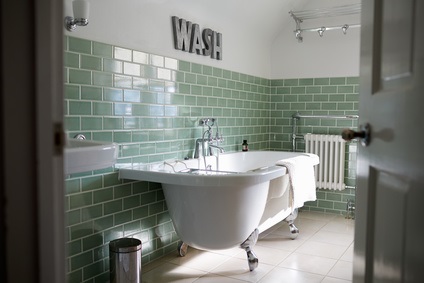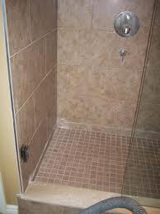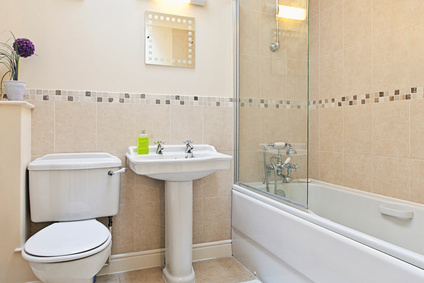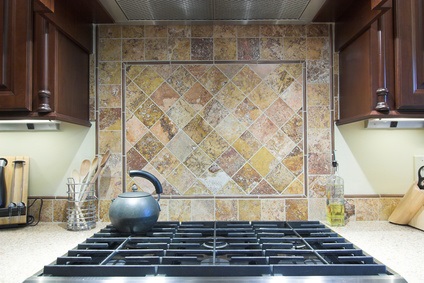GROUT
Grout? What is it really? It is the material that is applied to the spaces between tiles after the tile adhesive has fully cured during a tile installation.
The most common type of grout used to fill in the spaces between ceramic and other tile during installation is composed of graded aggregate, Portland cement, water dispersing agents, plasticizers, and color fast pigments. In more simple terms, it is the combination of cement, water, and colorant and is sometimes called cement-based or cementitious grout.
Cementitious grout comes in both premixed and powered forms. Powdered grout has to be mixed with water before use, while premixed grout comes in tubs and is convenient for small jobs.
Older cement-based grout was brittle and prone to cracking. It also dried irregularly, leaving colors inconsistent. Today's grouts contain polymer additives, which ensure color quality and increased flexibility, allowing for joint (space) widths of up to 1 and 1/4 inches.
WHY DO WE NEED TO USE GROUT?
Hard tile for flooring, as well as the tile in wall and countertop installation, is placed into an adhesive backing such as mortar or mastic with gaps between each tile. This is to prevent the cracking that could occur if and when the materials expand or contract against one another during temperature shifts.
These gaps could allow moisture and germs to penetrate down into the mortar and down to the sub material. Grout is used to seal the gaps between the tiles because it allows for the expansion and contraction of floor tile over time and prevents moisture and germ penetration.
Grout creates a floor, wall or countertop which is stronger, prevents the edges of the tiles from chipping and cracking, keeps out water, and gives the entire area a finished look with tiles that are perfectly aligned.
In certain situations, such as in a shower floor construction where 1”x 1” or 2”x 2” mosaic tiles are used, the grout every inch or two provides a good amount of slip resistance as well.
BASIC TYPES OF COMMON GROUT
There are 3 Basic Types of Common Grout:
- Cement Based Unsanded. Grout without sand is used when the space between tiles or stones are 1/8” wide or less.
- Cement Based Sanded. Grout with sand is used when the space between tiles or stones is greater than 1/8” wide. The sand helps bulk up the grout and keeps it from shrinking in the joints. Sanded grout can be a little more difficult to work with than non-sanded, but it is used because it is stronger and helps prevent cracking in wide joints.
- Epoxy. This type of grout contains neither cement nor water and
is instead a combination of epoxy
resin, silica fillers, pigments, and a hardener. It is much less porous than the cement type grouts
and is used in more complicated installations
or in areas where acids and greases occur (such as in a kitchen) where maximum stain resistance is needed.
Epoxy grouts also come in both sanded and unsanded forms, but the type of sand is different from that found in cementitious grouts.
When using epoxy grout with porous and unglazed tiles such as limestone or quarry, the tiles should be sealed before grouting since the epoxy grout can badly stain tile surfaces such as these.
Epoxy grouts do not need to be sealed. If they do get stains, they can be scrubbed with a mixture of bleach and water or vinegar and water to clean.
OTHER NOT SO COMMON
TYPES OF GROUT
There are other Hybrid Types of Grout available which include:
- Latex Modified Grout. This is sanded grout formulated with a latex polymer additive which enhances water proofing and increases strength.
- Modified Epoxy Grout. This is epoxy grout enhanced with Portland cement. It does require regular sealing but is harder, stronger, and more stain-resistant than the cement grouts.
- Furan Resin Grout. Similar to epoxy grout but made of polymers of fortified alcohols that are highly chemically resistant. No water is used. It has excellent chemical, physical, and heat resistance. Furan resin grout is commonly used to grout brick pavers and quarry tile, especially in areas exposed to chemicals and grease. Because of the difficulty of installation and the special skills needed, this type of grout is usually used for industrial projects such as laboratories and meat-packing plants, etc.
USING COLORED GROUT
Many times the color of the grout can be blended with the color of the tile. If, however, the color of the grout is contrasted to the color of the tile, a problem can arise during the process of working the grout into the spaces. The grout usually gets on the face of the tile and if left too long on white ceramic tile especially, the result may be disastrous permanent stains.
HOW IS GROUT APPLIED DURING A TILE INSTALLATION?
The grout is driven into the spaces between the tiles that have been marked with tiny ‘x’ shaped pieces placed at the corner of every tile (in order to create an even line and row of spaces). A rubber tool called a float is used. Any excess is wiped away with a wet sponge. Thus the spaces (also called joints) are filled to just below the surface.
Following the curing of the grout, the tiles are polished with a soft cloth to remove any grout left behind.
WHY DOES GROUT NEED TO BE SEALED?
Grout is made to be yielding and even though the ingredients in today's grout have improved its performance, the majority of grouts are porous and subject to staining from water, mold and mildew, and other penetrations.
The grout should be cured for at least a couple of days until it is completely dry and then sealer should be applied. This should be the case even in areas where glazed ceramics and porcelain are used.
Grout sealer will wear down over time so it should be reapplied periodically to avoid the need to sand and replace it. An easy way to determine whether the grout needs to be sealed is to simply sprinkle a few drops of water at several places around the tile. If areas of the grout soak in the water immediately, the grout should be sealed or re-sealed.
If the grout has not been sealed and is permanently stained, it is possible to have the old grout removed completely and replaced with a new application.
TYPES OF GROUT SEALERS
There are 2 Types of Grout Sealers:
- Membrane-Forming. This type is prone to peeling or getting cloudy as soon as the residual moisture from the mastic pushes to the surface of the tile.
- Penetrating Sealers. These sealers still breathe after soaking into tile and grout and are preferable to the membrane-forming.
HOW ABC CAN HELP
At ABC, we specialize in Cleaning and Ceramic Tile and Cleaning and Sealing Grout.
Call or text us today at 607-272-1566 to schedule
an appointment.
For more information on tile and grout cleaning and sealing please click on the Ceramic Tile, Ceramic Tile Cleaning, and Grout Sealing, and Tile and Grout Cleaning articles on our website.
"The Cleanest Clean You've Ever Seen."
by
ABC Oriental Rug & Carpet Cleaning Co.
130 Cecil Malone Drive Ithaca, NY 14850
607-272-1566
